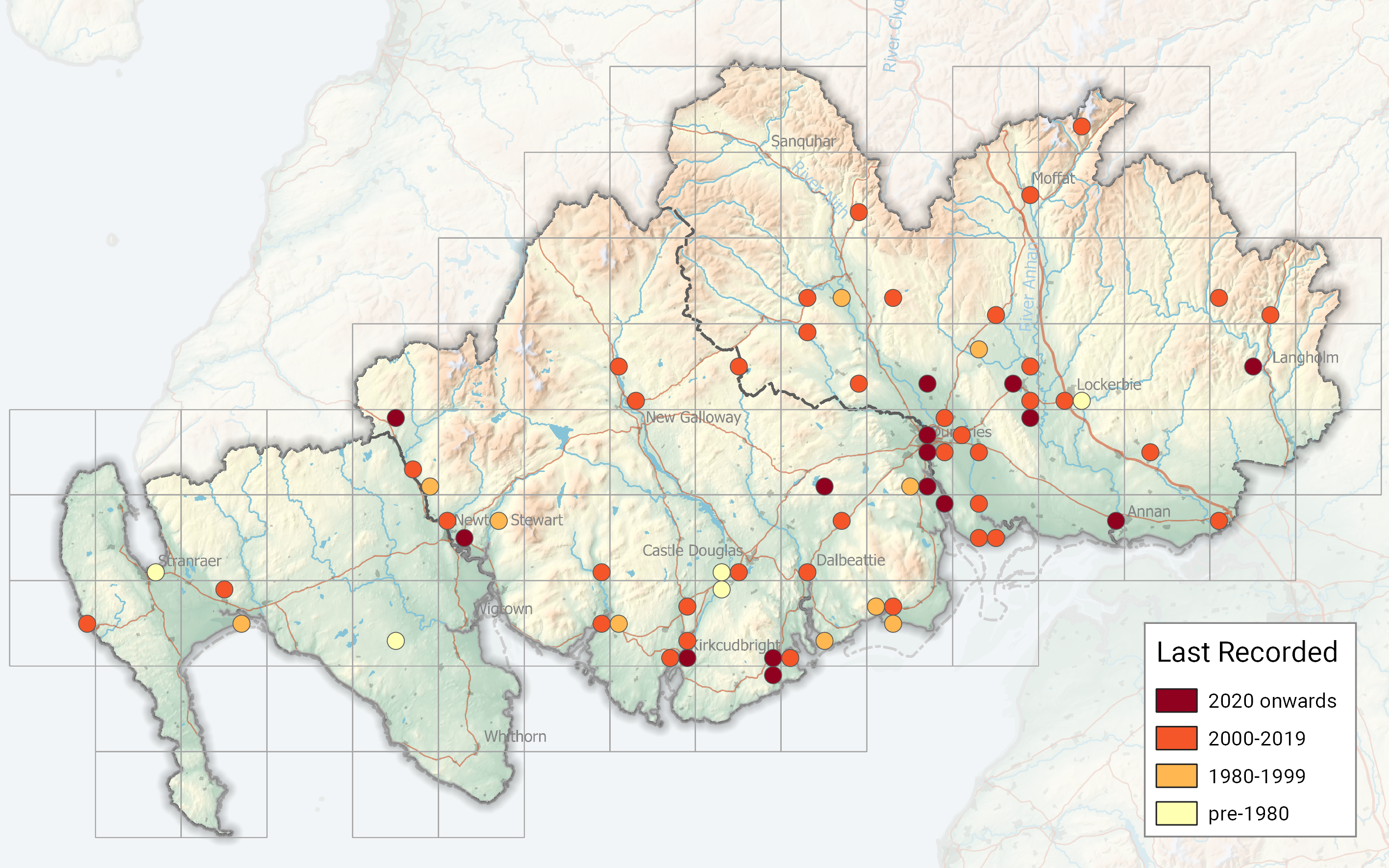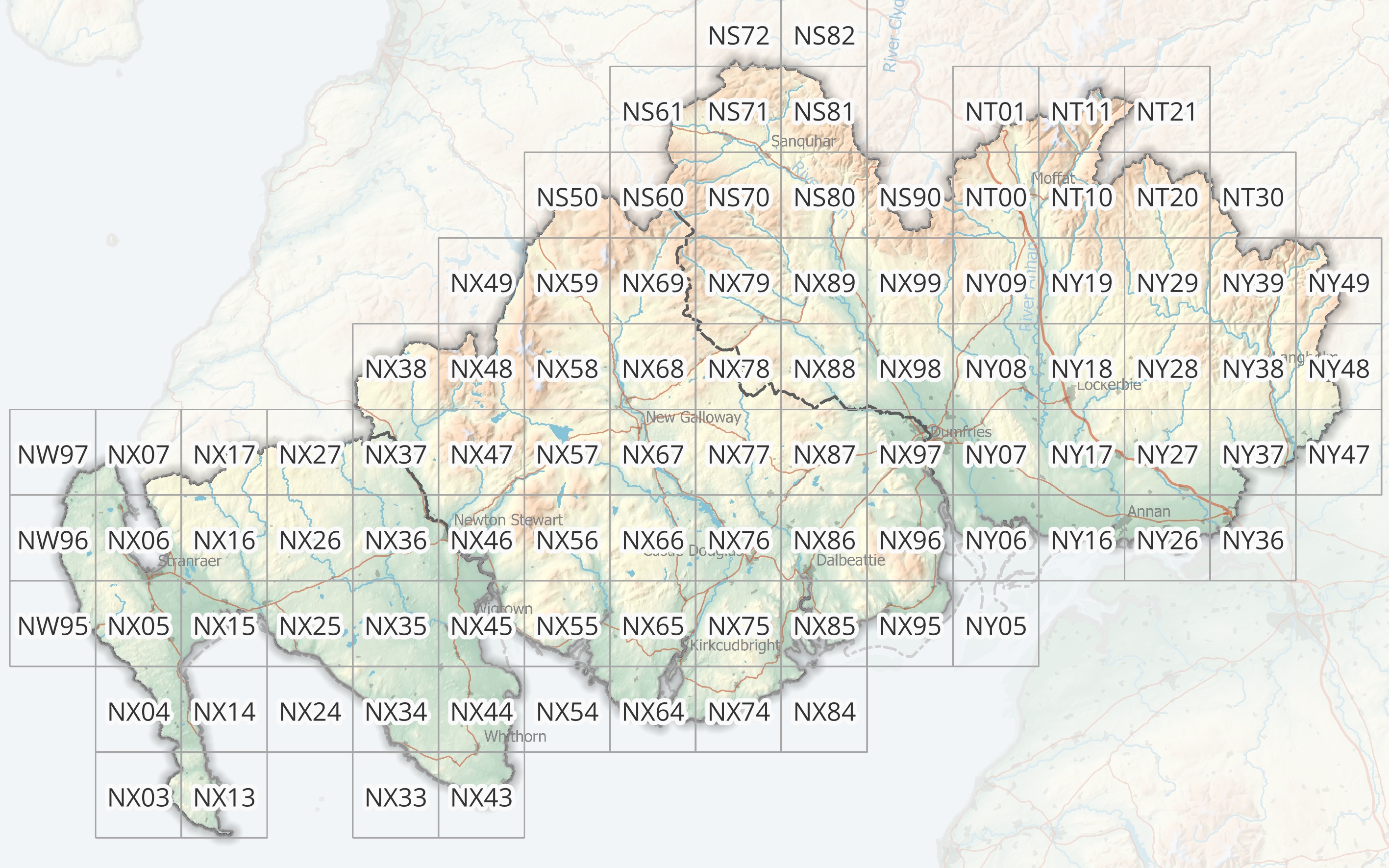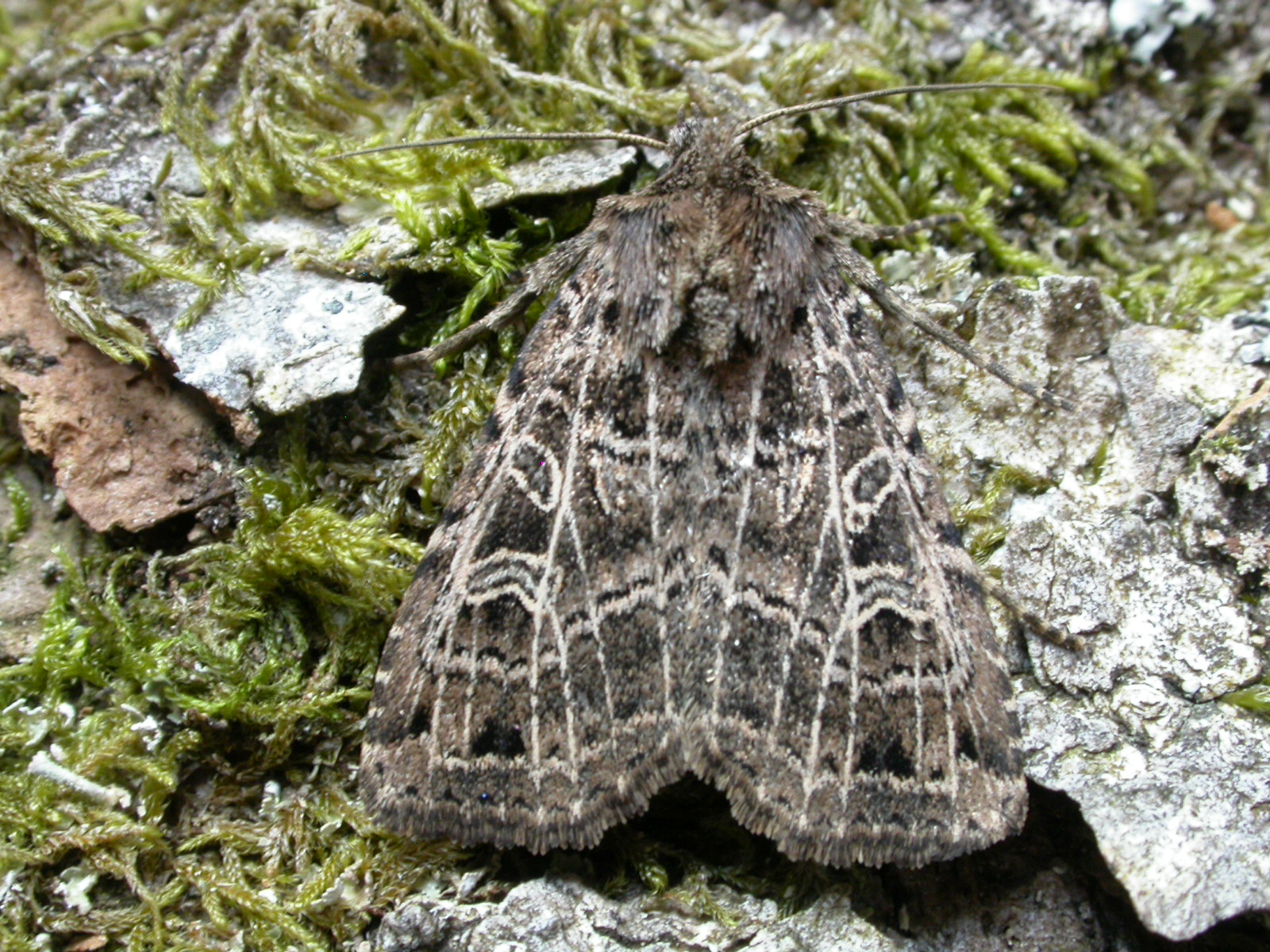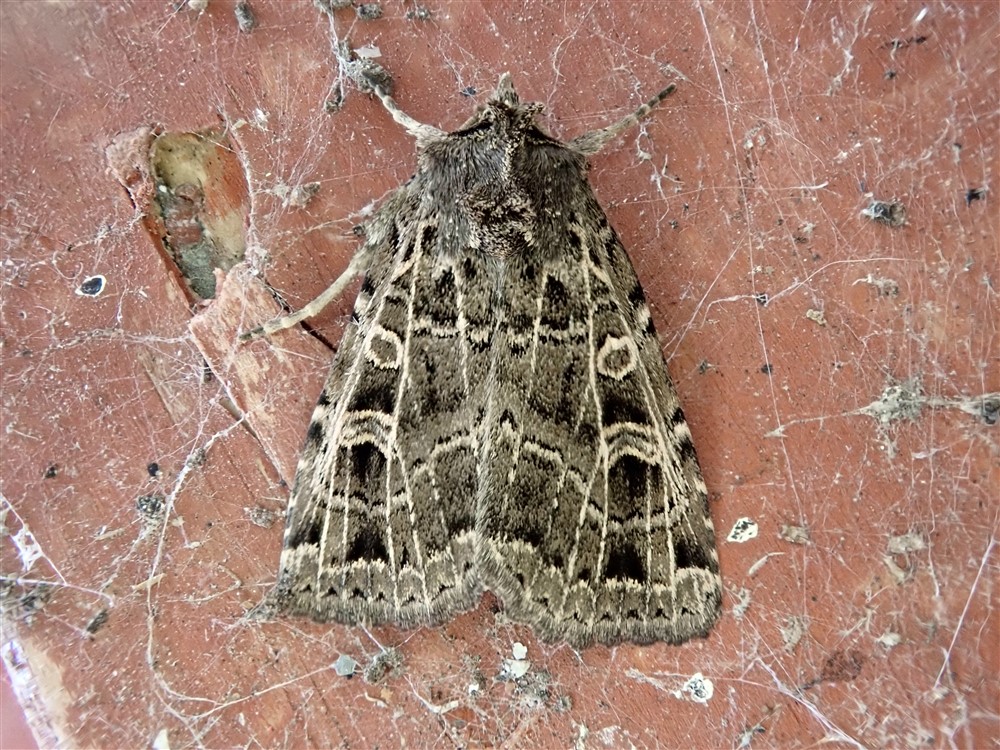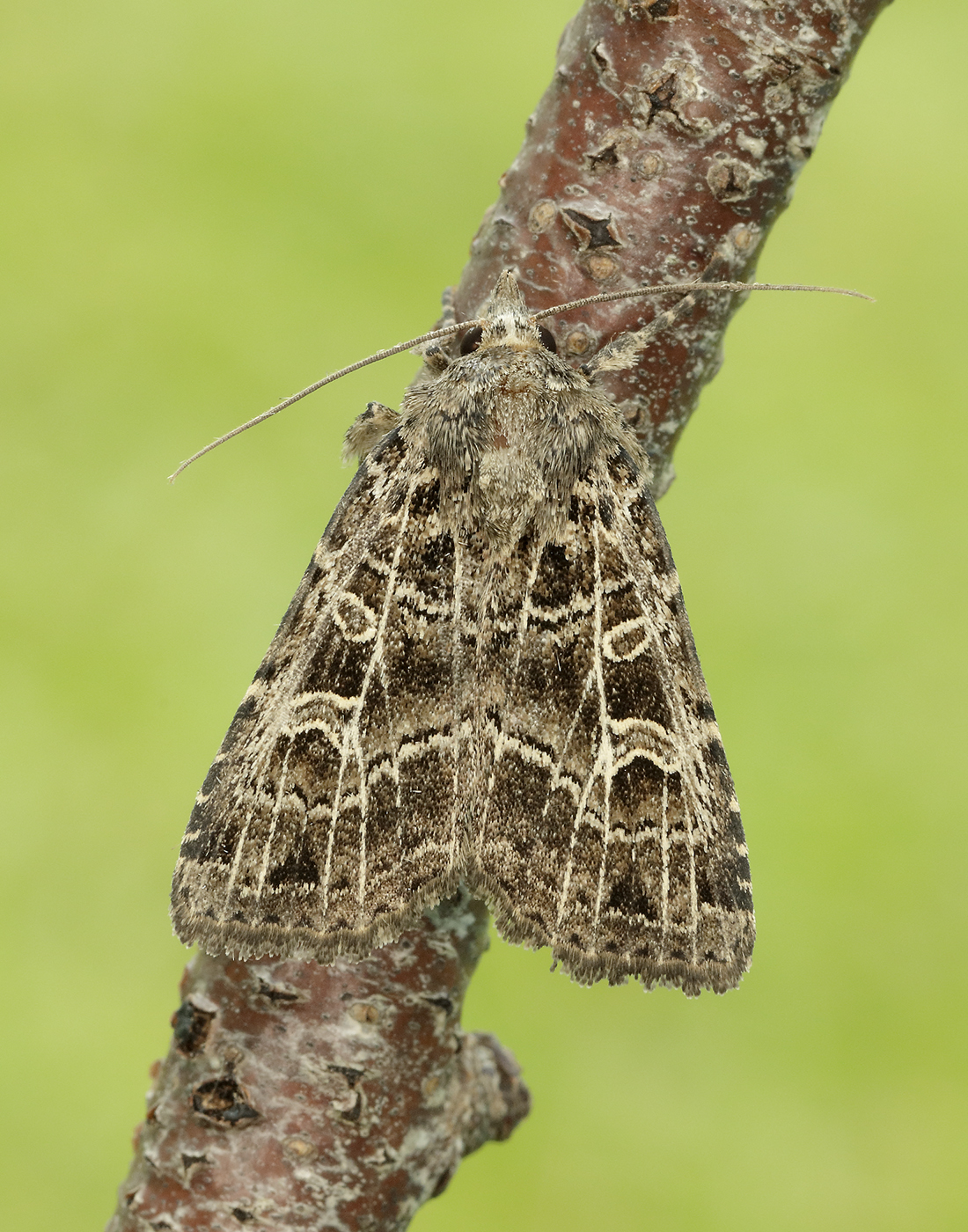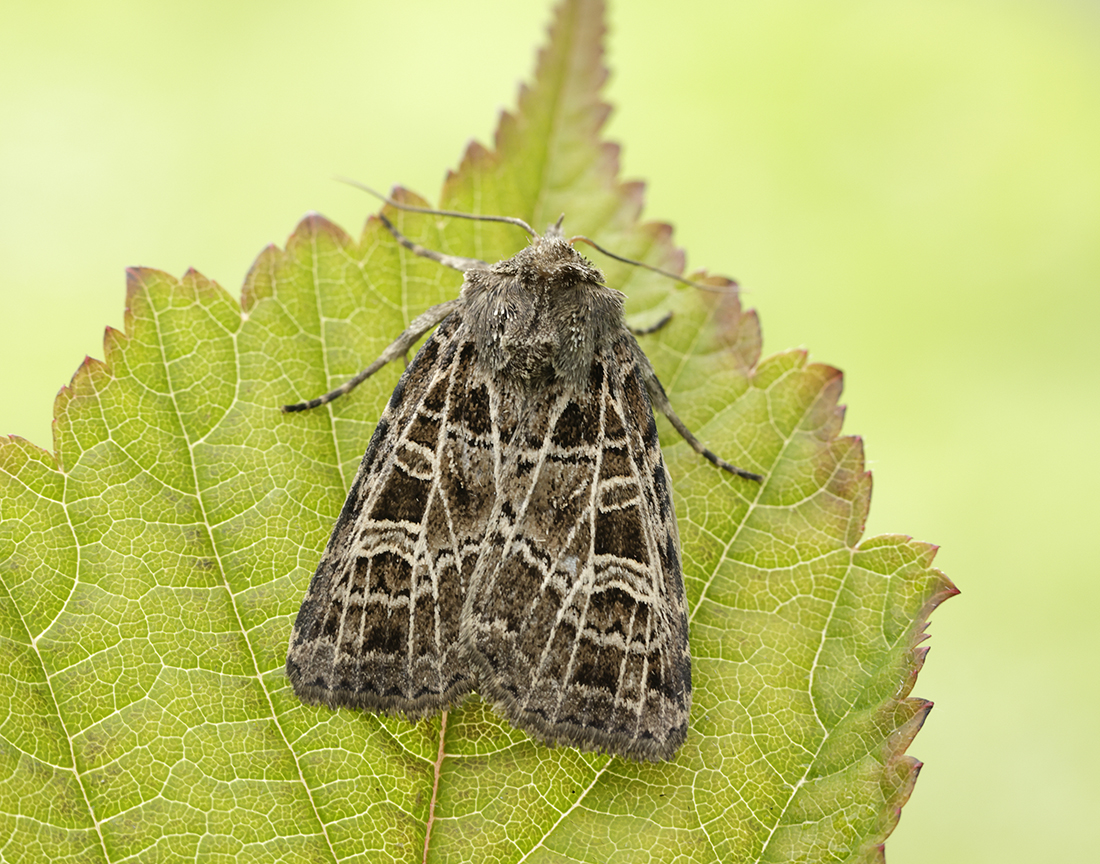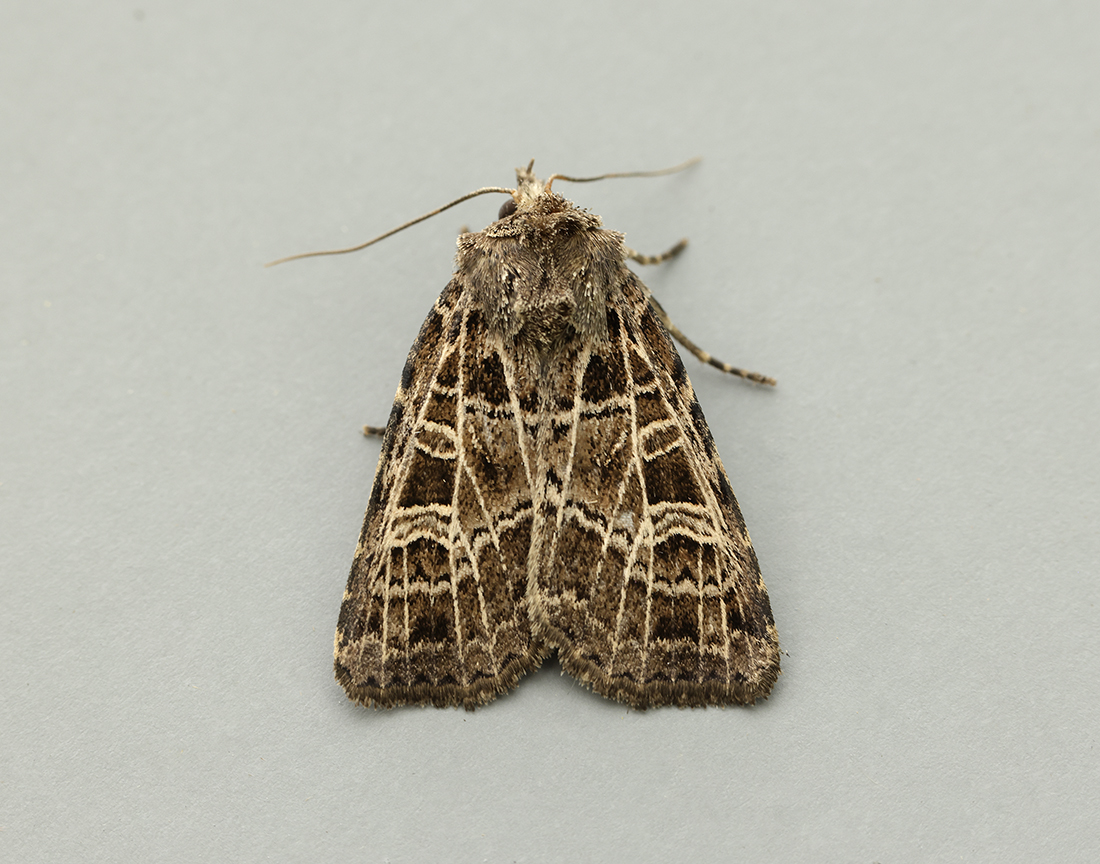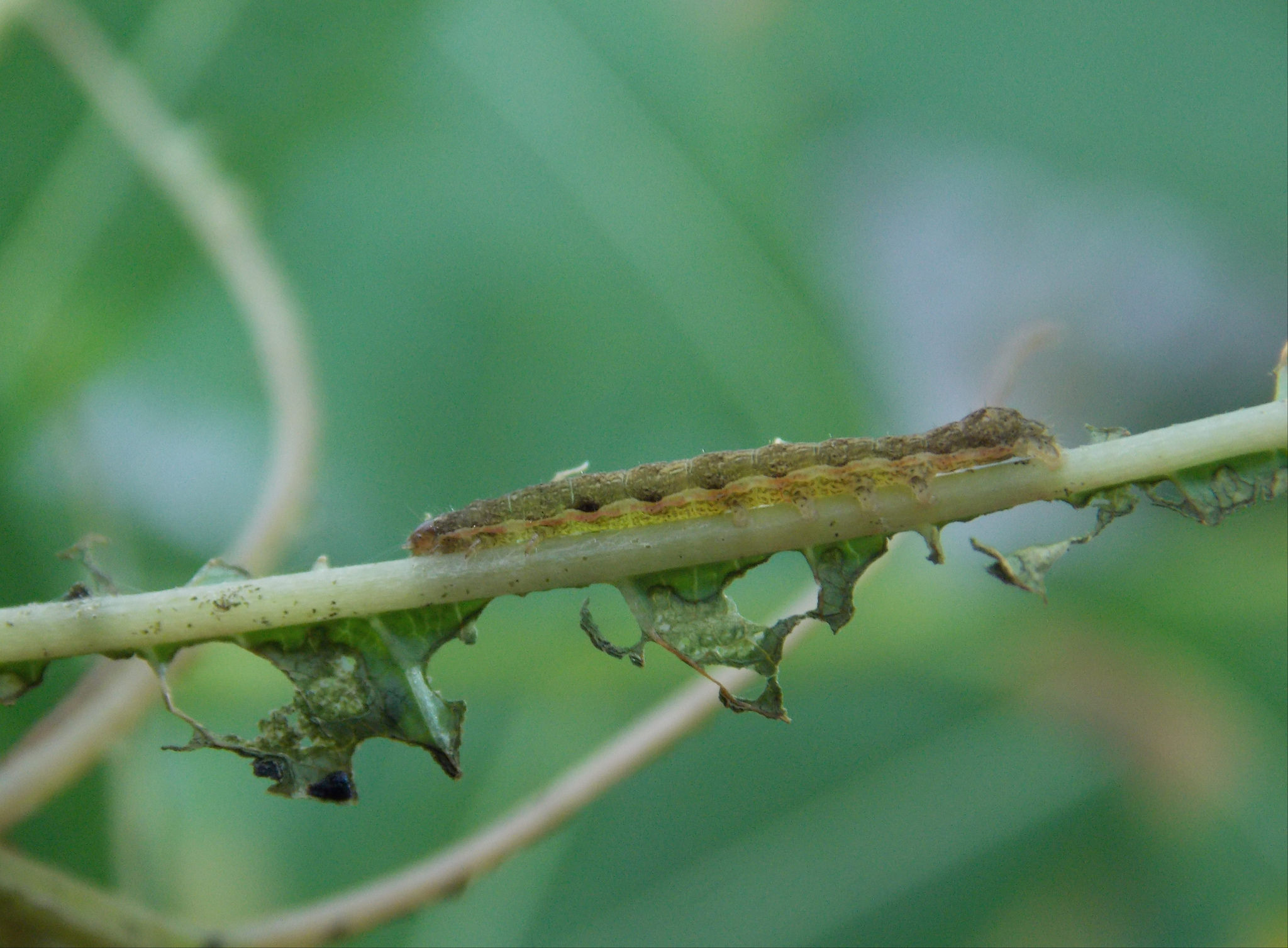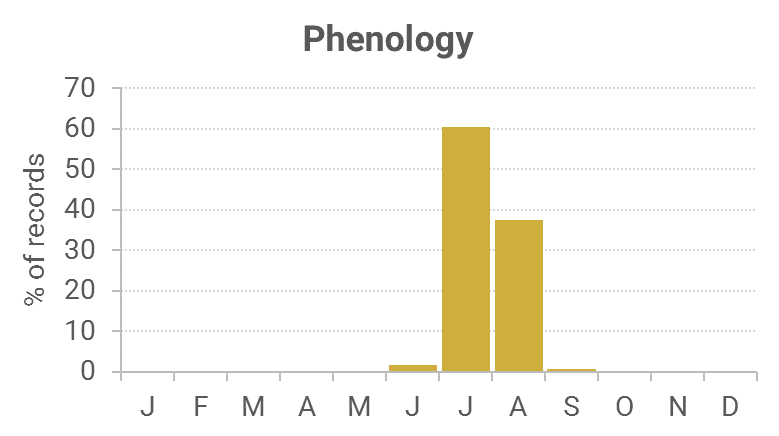Identification
Unmistakable in Scotland as the male Feathered Gothic has feathered antennae and flies later in the year.
Recording Method.
Attracted to light in small numbers and more frequently to sugar.
Life cycle
One generation. Overwinters as a larva during July to April, feeding by night, with pupation underground.
Larval foodplants
A wide range of herbaceous and woody plants including Blackthorn, cleavers, sallows, Apple and buddleias.
Habitat
Damp woodland, marshes, gardens and weedy hedgerows.
History
Gordon (1913) had found it common at sugar some years at Corsemalzie, Wigtownshire. Earliest date was 1st July 1905. Since then, Cunningham had found it on Tinwald Downs during 1951, and R. M. Palmer recorded it from Moffat in 1970, with another at Stranraer in 1975.
During 1976-87 there were only ten records from four of the Rothamsted stations, Gatehouse of Fleet, Bridge of Dee and Mabie Forest (VC73) and Waterside Mains at Keir (VC72). However, from 1992 to 2010 there had been eighty records from widespread sites across VCs 72 and 73, though only Newton Stewart and Torrs Warren had produced records for Wigtownshire.

